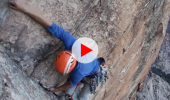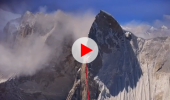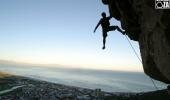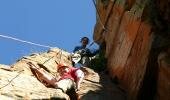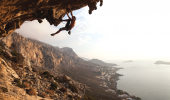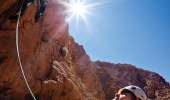Words: Kobus Bresler | Photos: Various Contributors
Like most kids, I loved spending time on my mountain bike messing about and pulling stunts. In my late teens, I started enjoying the sport even more and by the age of 19, I was competing in every race I could get to. It went well for the next four years and I was getting better by the day. This was it for me and I was starting to get serious.
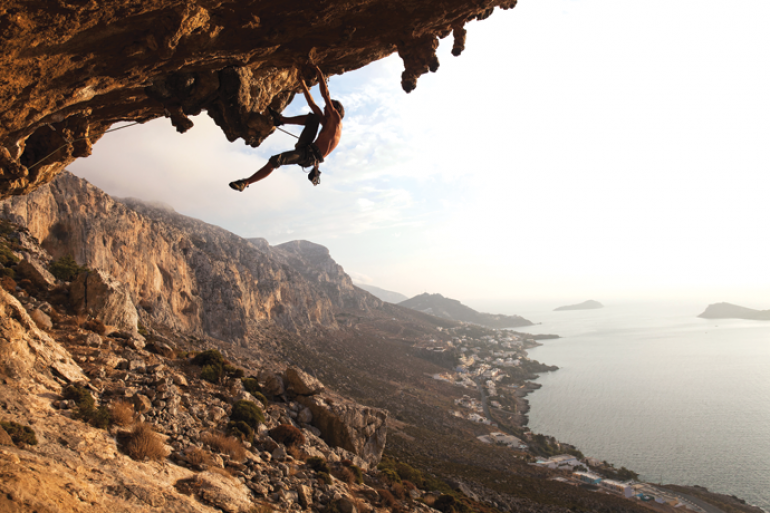
However, this all changed when I was introduced to the sport of rock climbing. From day one I was hooked and suddenly I couldn’t find the time to dust off my mountain bike, despite the fact that I had enjoyed it so much. Every opportunity was used to get onto the rocks or even just some training on the wall at the centre I was working at.
In my opinion that is climbing. You get hooked and can’t stop thinking about the next crag to visit or what grade you want to push. In addition, the time spent with your buddies at the crag can’t be exchanged for anything and, above all else, you learn so much about yourself. You learn about your mental strength and your ability to endure. You also learn how to develop this and constantly push yourself harder to improve. Climbing will challenge you physically and help develop many of the muscles groups you forgot about. But more than anything, you have loads of non-stop, challenging fun.
So what is climbing? What does it mean to go climbing and what does the sport entail? Climbing is simply an activity where you use your hands, feet and any other body part needed to surmount a steep obstacle. This obstacle can come in the form of a boulder, rock face, artificial wall, tree, building or mountain. Climbing is mostly about self-confidence and trust in your climbing partner. You do not want to end up taking one scary fall after another and risk potential injury because of poor technique, as this will put you off the sport completely. If you are just starting to explore climbing, be sure to choose a climbing buddy you can trust and visit a climbing gym first where they can teach you the correct belaying and safety techniques. These techniques are illustrated on the internet and in numerous publications, but this will never replace proper instruction. The folks at your local gym will be more than happy to assist you.
There are numerous different forms of climbing with subcategories and various styles, so it is important to define these first to avoid any confusion.
Climbing styles
Rock climbing is simply ascending different rock formations with the aim of reaching the top or another defined point. This is done by using mainly your hands and feet, while securely tied to a safety rope. Ascending rocks is one of the more popular forms in the climbing sport and can be done in many different ways, including top rope climbing, sport climbing and traditional climbing.
Free climbing is another well-known style in this category and simply means climbing without a rope.
Aid climbing and big wall climbing also fall into this category, but have a few unique techniques and its own specialised equipment.
Bouldering is the challenge of scaling boulders or small outcrops by reaching the top or a defined point. This may also include traversing along the side of a boulder. At first, bouldering was seen merely as training for steeper and longer rock climbs, but over the years it has grown into its own well-defined sport. While bouldering, you usually won’t be tied to a safety rope, but rather have a crash pad in place in case of a fall or have your buddies spotting you to break any unbalanced fall. This is successfully achieved by not moving too far off the ground.
Indoor climbing has really taken off in South Africa and there is a growing interest in the sport. Mainly used by climbers for training between trips to the crag, the sport has developed its own identity, with competitive leagues evolving from it. Techniques and equipment are similar to what is used when rock climbing, but the main difference is the artificial climbing surface.
Ice climbing is another form of ascent by scaling ice or hard snow formations using special equipment designed for the purpose, such as ice axes and crampons. The techniques used to protect the climber are similar to those of rock climbing, although the protective devices or anchors may be different and include ice screws and snow wedges.
Mountain or alpine climbing simply means moving up a mountain generally with the aim of reaching the summit. Techniques are once again similar to other forms of climbing and may include pure rock or ice climbing. However, there are numerous styles and methods specific to alpine climbing.
Buildering is not a well-known sport as it involves climbing urban structures, usually without any equipment, and avoids normal means of ascent like stairs and elevators. The reasons why the sport of buildering has not really taken off in South Africa are mainly due to the fact that it is frowned upon and mostly illegal. So, if you are looking for a huge number of YouTube hits then buildering is the way to go. The downside of the sport is that not many people survive long enough to become famous.
Other less popular forms of climbing include rope climbing, tree climbing and lumberjack.
Now that we have broadly defined some of the different climbing categories and styles, we can start looking at why this sport has become so popular and offers so much to its willing participants.
In upcoming issues, I will discuss the different climbing styles in more detail and try to explain what makes each style unique, with the emphasis on artificial walls, rock climbing and bouldering. As with most things, climbing is a progression and if challenged correctly and safely, it will boost your confidence and self-belief. I will also look at the various climbing techniques, training needed to keep you climbing fit and the various climbing equipment needed to practise the sport safely.
In the meantime, check out your local climbing scene and identify climbing gyms in your area that offer artificial walls. At most gyms you can rent the gear first, which allows you to decide if you enjoy it before purchasing any specialised gear.
Until next time, have fun and be safe!





